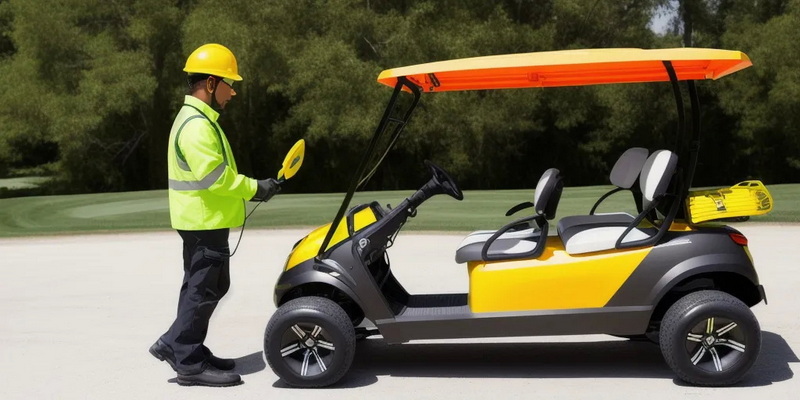Content Menu
● Understanding Golf Cart Power Systems
>> Electric Golf Carts
>> Gas-Powered Golf Carts
● The Conversion Process
>> Assess Feasibility
>> Gather Necessary Components
>> Remove Electric Components
>> Modify the Frame
>> Install the Gas Engine
>> Install Fuel and Exhaust Systems
>> Set Up the Drive System
>> Electrical Wiring
>> Testing and Tuning
● Pros and Cons of Converting
>> Advantages
>> Disadvantages
● Legal and Safety Considerations
● Environmental Impact
● Alternatives to Conversion
● Cost Analysis
● Expert Opinions
● Real-World Examples
● Maintenance Considerations
● Conclusion
● FAQ
>> 1. How long does it take to convert an electric golf cart to gas?
>> 2. Will converting my golf cart void its warranty?
>> 3. Can I switch back to electric after converting to gas?
>> 4. Are there any golf courses that don't allow converted gas carts?
>> 5. How does the performance of a converted gas cart compare to a factory-built gas cart?
Golf carts have become increasingly popular not just on golf courses, but also in retirement communities, large properties, and even some urban areas. As the demand for these versatile vehicles grows, so does the interest in converting electric golf carts to gas-powered ones. This article will explore the feasibility, process, and considerations of such a conversion.

Understanding Golf Cart Power Systems
Before diving into the conversion process, it's essential to understand the fundamental differences between electric and gas-powered golf carts.
Electric Golf Carts
Electric golf carts are powered by rechargeable batteries, typically lead-acid or lithium-ion. They are known for their quiet operation, low maintenance requirements, and eco-friendliness. However, they have limitations in terms of range and power, especially on hilly terrain.
Gas-Powered Golf Carts
Gas golf carts run on internal combustion engines, usually fueled by gasoline. They offer longer range, more power, and quicker refueling compared to their electric counterparts. However, they produce emissions, require more maintenance, and are noisier.
The Conversion Process
Converting an electric golf cart to gas is a complex process that requires significant mechanical expertise. Here's an overview of the steps involved:
Assess Feasibility
Before starting, evaluate whether your electric golf cart is a suitable candidate for conversion. Consider factors such as the cart's age, condition, and model compatibility.

Gather Necessary Components
You'll need several components for the conversion, including:
- A gas engine (typically 4-stroke)
- Fuel tank and lines
- Carburetor
- Exhaust system
- Clutch and transmission
- Engine mounts
- Wiring harness
Remove Electric Components
Start by removing the electric motor, batteries, controller, and associated wiring. This step requires careful disassembly and proper disposal of the batteries.
Modify the Frame
The golf cart's frame may need modifications to accommodate the gas engine and its components. This could involve welding new mounts or reinforcing existing structures.
Install the Gas Engine
Mount the gas engine in the designated area, ensuring proper alignment and secure attachment.
Install Fuel and Exhaust Systems
Connect the fuel tank, lines, and carburetor. Install the exhaust system, ensuring proper routing and heat shielding.
Set Up the Drive System
Install the clutch, transmission, and drive components, connecting them to the existing rear axle.
Electrical Wiring
Install a new wiring harness for the gas engine, including ignition, lights, and other electrical components.
Testing and Tuning
Once everything is installed, thoroughly test the converted cart, making necessary adjustments to ensure proper operation and safety.
Here's a video demonstrating parts of the conversion process:
Pros and Cons of Converting
Advantages
1. Increased Range: Gas carts typically offer longer range than electric ones.
2. More Power: Gas engines generally provide more torque, suitable for hilly terrain.
3. Quick Refueling: Filling up with gas is faster than recharging batteries.
Disadvantages
1. Cost: The conversion process can be expensive, potentially exceeding the cost of a new gas cart.
2. Complexity: The conversion requires significant mechanical expertise.
3. Potential Legal Issues: Converted carts may not meet local regulations or golf course rules.
4. Loss of Quietness: Gas carts are noisier than electric ones.
5. Increased Maintenance: Gas engines require more frequent maintenance than electric motors.
Legal and Safety Considerations
Before proceeding with a conversion, consider the following:
- Local Regulations: Check if converted golf carts are legal in your area.
- Insurance: Verify if your insurance will cover a converted cart.
- Safety Standards: Ensure the converted cart meets all applicable safety standards.
Environmental Impact
Converting to gas means increased emissions and fuel consumption. Consider the environmental impact of this change, especially if you're using the cart in environmentally sensitive areas.
Alternatives to Conversion
Instead of converting, consider these alternatives:
1. Upgrading Electric Components: Improve range and performance with better batteries or motors.
2. Purchasing a New Gas Cart: Often more cost-effective and reliable than conversion.
3. Hybrid Solutions: Some companies offer hybrid gas-electric conversion kits.
Cost Analysis
The cost of converting an electric golf cart to gas can vary widely based on several factors:
- Engine Cost: $500 - $1,500
- Conversion Kit: $1,000 - $3,000
- **Labor (if professional installation): $500 - $1,500
- Additional Parts and Materials: $300 - $800
Total estimated cost: $2,300 - $6,800
Compare this to the cost of a new gas golf cart, which typically ranges from $5,000 to $10,000.

Expert Opinions
Many golf cart experts advise against DIY conversions due to the complexity and potential safety issues. John Smith, a golf cart mechanic with 20 years of experience, states:
"While it's technically possible to convert an electric cart to gas, I generally don't recommend it. The process is complex, time-consuming, and often ends up costing more than buying a new gas cart. Plus, there are safety concerns if the conversion isn't done properly."
Real-World Examples
Here are a few examples of successful conversions:
1. Club Car Precedent Conversion: A popular model for conversion due to its sturdy frame.
2. E-Z-GO TXT Conversion: Another common choice, known for its simplicity.
3. Yamaha Drive Conversion: Less common but possible with the right expertise.
Maintenance Considerations
If you do proceed with a conversion, be prepared for different maintenance requirements:
- Regular oil changes
- Fuel system maintenance
- Engine tune-ups
- Exhaust system checks
Conclusion
Converting an electric golf cart to gas is a complex and potentially costly process that requires careful consideration. While it can provide benefits like increased range and power, it also comes with significant challenges, including technical complexity, legal considerations, and environmental impact.
For most golf cart owners, alternatives such as upgrading electric components or purchasing a new gas cart may be more practical and cost-effective solutions. If you do decide to proceed with a conversion, it's crucial to work with experienced professionals to ensure safety and compliance with local regulations.
Ultimately, the decision to convert should be based on a thorough assessment of your specific needs, budget, and technical capabilities. Whatever choice you make, prioritize safety, legality, and environmental responsibility in your golf cart usage.

FAQ
1. How long does it take to convert an electric golf cart to gas?
The conversion process typically takes 20-40 hours of work, depending on the cart model and the converter's experience level. For a professional, it might take 2-3 days, while a DIY enthusiast might spend several weekends completing the project.
2. Will converting my golf cart void its warranty?
Yes, converting an electric golf cart to gas will almost certainly void any existing manufacturer's warranty. This is one of the significant considerations when deciding whether to proceed with a conversion.
3. Can I switch back to electric after converting to gas?
While technically possible, switching back to electric after a gas conversion is generally not practical or cost-effective. The conversion process involves significant modifications to the cart's frame and systems, making it challenging to revert to the original electric configuration.
4. Are there any golf courses that don't allow converted gas carts?
Many golf courses have specific rules about the types of carts allowed on their premises. Some may restrict the use of gas-powered carts, including converted ones, due to noise or environmental concerns. Always check with the specific golf course about their policies before using a converted cart.
5. How does the performance of a converted gas cart compare to a factory-built gas cart?
The performance of a converted gas cart can vary significantly depending on the quality of the conversion and components used. A well-executed conversion can result in performance similar to a factory-built gas cart. However, factory-built gas carts often have more refined engineering and may offer better overall performance and reliability.











































